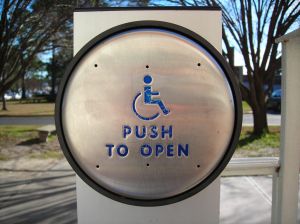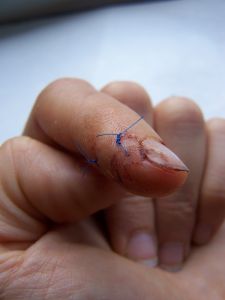Paulino v. Chartis Claims, Inc., a case from the Untied States Court of Appeals for the Eighth Circuit, involved claimant who suffered a spinal cord injury while working for employer. His work-related accident left him a permanent paraplegic.
Following the accident, employee’s workers compensation insurance company paid the cost of claimant’s medical treatment and rehabilitation services. After a considerable amount of time at the rehabilitation center, claimant was transferred to another post-operative care center, where he learned how provide himself with basic care and was supposed to be transferred to a permanent assisted living facility.
 Employer’s insurance company was unable to find a center he could afford on the less than $400 he was receiving in workers’ compensation benefits they were paying him. He was also unable to seek federal disability assistance under the Social Security Administration (SSA) due to his status as an undocumented worker from Mexico. Even without an assisted living facility, he was in need of wheelchair accessible housing, with appropriate accommodations, and access to public transportation. Employer’s insurance company case manager tried to assist him with finding suitable housing but was again unable to help him.
Employer’s insurance company was unable to find a center he could afford on the less than $400 he was receiving in workers’ compensation benefits they were paying him. He was also unable to seek federal disability assistance under the Social Security Administration (SSA) due to his status as an undocumented worker from Mexico. Even without an assisted living facility, he was in need of wheelchair accessible housing, with appropriate accommodations, and access to public transportation. Employer’s insurance company case manager tried to assist him with finding suitable housing but was again unable to help him.
Continue reading
 Massachusetts Workers Compensation Lawyers Blog
Massachusetts Workers Compensation Lawyers Blog


 The state workers’ compensation bureau awarded claimant benefits for the amputation of his four fingers after the accident, allowed a further claim for a one-third disability in his index finger in 1985, and another claim in 1990 for two-thirds loss of his other three fingers.
The state workers’ compensation bureau awarded claimant benefits for the amputation of his four fingers after the accident, allowed a further claim for a one-third disability in his index finger in 1985, and another claim in 1990 for two-thirds loss of his other three fingers. In this accident, his employer was self-insured, accepted liability for workers’ compensation, and paid for all medical bills related to his rotator cuff surgery and lost wages associated with his disability rating.
In this accident, his employer was self-insured, accepted liability for workers’ compensation, and paid for all medical bills related to his rotator cuff surgery and lost wages associated with his disability rating. Her husband drove her to the hospital that day, and doctors diagnosed her with fractures in one of her fingers and the fifth metacarpal of her left hand. Intake records show she was able to walk, her main complaint was pain in her hand, and she denied any other injuries from the fall.
Her husband drove her to the hospital that day, and doctors diagnosed her with fractures in one of her fingers and the fifth metacarpal of her left hand. Intake records show she was able to walk, her main complaint was pain in her hand, and she denied any other injuries from the fall. After reaching this settlement, plaintiff filed a wrongful death civil lawsuit against employer and obtained a default judgment in the amount of $9.525 million in damages. After the default judgment was entered, employer refused to pay the judgment. At this point, plaintiff sued employer again in state court, alleging employer breached its agreement under their liability policy. Employer had the case removed to federal court.
After reaching this settlement, plaintiff filed a wrongful death civil lawsuit against employer and obtained a default judgment in the amount of $9.525 million in damages. After the default judgment was entered, employer refused to pay the judgment. At this point, plaintiff sued employer again in state court, alleging employer breached its agreement under their liability policy. Employer had the case removed to federal court. A year later, when claimant was using a power auger to clear a kitchen sink drain in a hotel, her right glove became caught in the auger and crushed her wrist and hand. Doctors initially diagnosed claimant with a hand sprain and two finger sprains and bruises. She was eventually cleared to return to work full time, but her supervisor felt she was not physically capable of performing the work in the manner she could before the on-the-job injury.
A year later, when claimant was using a power auger to clear a kitchen sink drain in a hotel, her right glove became caught in the auger and crushed her wrist and hand. Doctors initially diagnosed claimant with a hand sprain and two finger sprains and bruises. She was eventually cleared to return to work full time, but her supervisor felt she was not physically capable of performing the work in the manner she could before the on-the-job injury.
 According to a recent news release from the United States Occupational Safety and Health Administration (
According to a recent news release from the United States Occupational Safety and Health Administration ( X-rays of her hand were negative for physical injuries and a head CT scan showed no abnormalities. Her doctor stated that she had nearly fully recovered but recommended continued physical therapy. After completing physical therapy, she had made a significant recovery from her injuries, according to her PCP.
X-rays of her hand were negative for physical injuries and a head CT scan showed no abnormalities. Her doctor stated that she had nearly fully recovered but recommended continued physical therapy. After completing physical therapy, she had made a significant recovery from her injuries, according to her PCP.